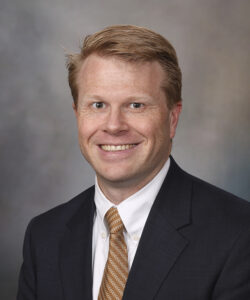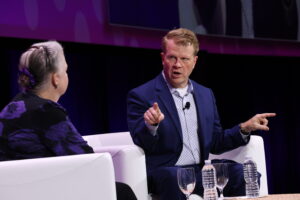CHICAGO—Rheumatologists have a role in combating their risk of burnout, said Tait Shanafelt, MD, hematologist/oncologist and the Jeanie and Stew Ritchie Professor at Stanford University, Palo Alto, Calif., during the Opening Session of ACR Convergence 2025.
Dr. Shanafelt is also the chief wellness officer at Stanford Medicine and a well-known thought leader in the area of physician burnout. He has published more than 575 peer-reviewed papers and commentaries.
During his presentation, Dr. Shanafelt detailed factors that contribute to occupational burnout among physicians and what organizations and individual clinicians can do to lower their risk of burnout.
He shared the experience of his mother, who recently died and was in hospice care during the last weeks of her life.
“End-of-life care is obviously an area very familiar to me as an oncologist. And yet I experienced it in a very different and personal way in that time as the hospice nurses and physicians supported our family,” Dr. Shanafelt said. This illustrates why system approaches to preventing burnout are so important.
A 12-year longitudinal study on burnout in the U.S. physician workforce led by Dr. Shanafelt and published in 2025 found that 45.2% of physicians reported at least one symptom of burnout in 2023, which was lower than 2021, but still in line with earlier findings from 2011 (45.5%; but 62.8% during the COVID-19 pandemic). The 2023 study results were based on a survey with more than 7,600 physician participants and a probability-based sample of the U.S. working population. In the study, physicians were at a higher risk for burnout than other U.S. workers and less likely to be satisfied with their work–life integration.1
Burnout Contributors
As Dr. Shanafelt outlined some of the major factors associated with burnout, he also acknowledged that the audience was likely well aware of those factors because they live it day to day.
Decreased time with patients, extra work with electronic health records (EHR), increased regulatory issues and more clinical demands all frequently contribute to burnout, Dr. Shanafelt said.
Isolation is also a factor. It’s something Dr. Shanafelt began spotlighting in 2018, long before the COVID-19 pandemic amplified the issue further. “We’ve all gotten busier seeing more patients and spending more time documenting in the EHR, which has translated into rubbing elbows with our colleagues less,” he said.




